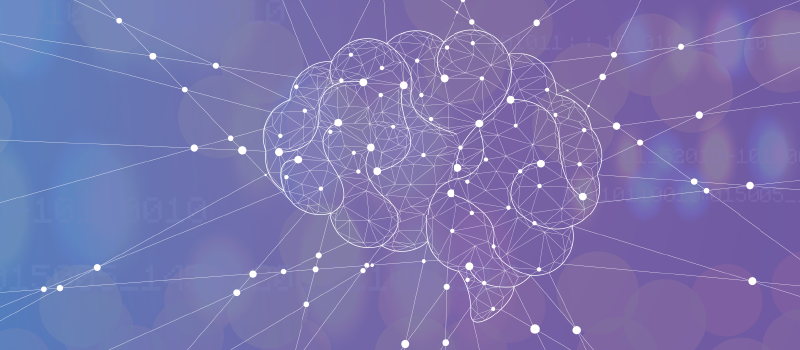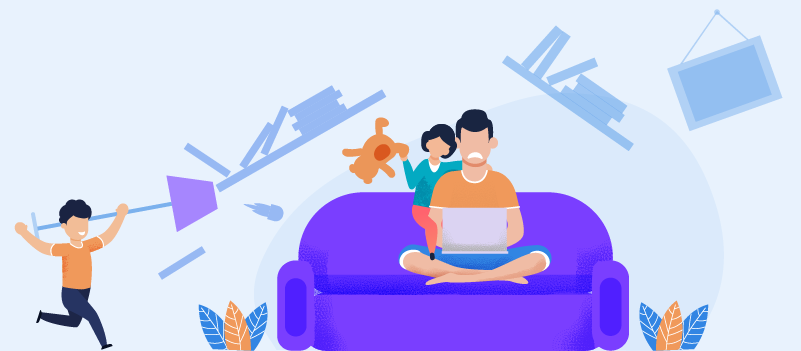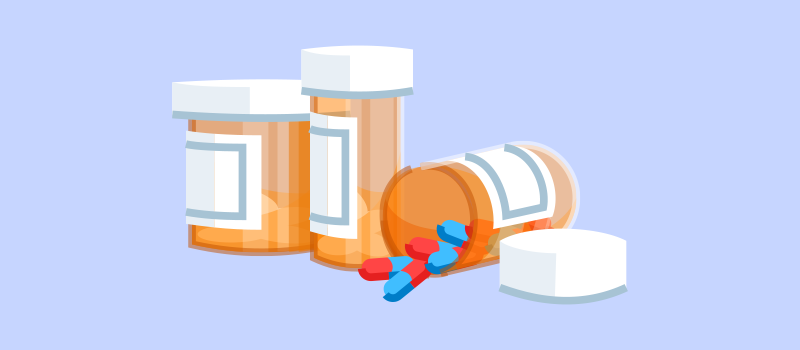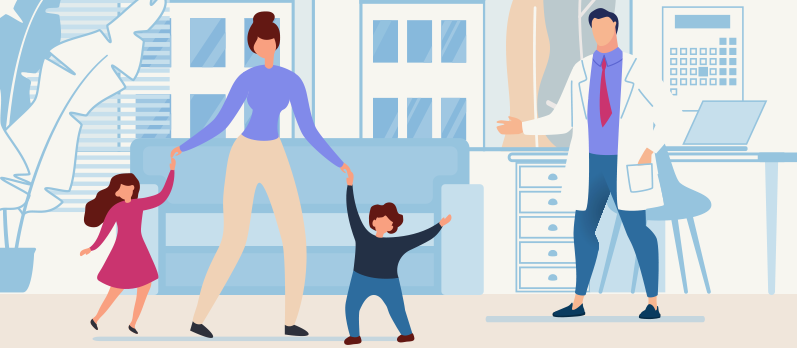What’s the Buzz
The Bee Healthy Blog
My Child Was Diagnosed with ADHD, Now What?

Attention deficit hyperactivity disorder (ADHD) is a neurodevelopmental disorder that is usually diagnosed in childhood and can last into adulthood. It is characterized by overactivity, impulsivity, and the inability to pay attention. A 2016 national survey estimated that more than 6 million American kids have received a diagnosis of ADHD. It is believed that 4 to 12% of children have this condition. Boys are 2-3 times more likely than girls to have ADHD.
If your child has been diagnosed with ADHD, it can feel overwhelming. The good news is that attention deficit hyperactivity disorder ADHD can be treated effectively with behavioral therapy and medications. Educating yourself about the condition is the first step in understanding it and getting children with ADHD the help they need.
How is a child diagnosed with ADHD?
There is no single test to diagnose ADHD in children. Diagnosing a child with ADHD consists of several steps. One of these steps is ruling out other conditions that can cause similar symptoms as ADHD. Depression, anxiety, sleep disturbances, and learning disabilities can often present a similar picture to ADHD. Your child’s pediatrician or primary care physician may order vision and hearing tests to see if any problems here could explain the child’s behavior. Once other mental health conditions have been ruled out, diagnosing ADHD consists of rating a checklist of symptoms based on information obtained from parents, the child’s school and teachers, other adults who care for the child, and the child themselves.
Doctors use the DSM 5 (Diagnostic and Statistical Manual of Mental Disorders) to make an accurate diagnosis of ADHD. At least six out of all the symptoms listed in DSM 5 must be present in younger children (five in adolescents above age 17) to say a child has ADHD.
A doctor will look at various things while diagnosing ADHD, such as the presence of multiple symptoms before age 12 and the presence of symptoms in two or more settings (at home, school, and with friends and relatives). The evaluation also includes determining to what extent the symptoms are interfering with a child’s ability to function in the classroom, at home, and socially. As noted, an accurate diagnosis of ADHD involves ruling out other mental health conditions like anxiety and depression that can cause similar symptoms.
Typical Developmental Behavior vs. ADHD
It has long been a concern that ADHD may be wrongly diagnosed in younger children. This is because the common symptoms of ADHD can be found in many children at some point or another, notably inattentiveness or hyperactivity. Preschoolers don’t have the longest attention spans, after all, and young children are often bursting with energy, so diagnosing children with ADHD should be done after their typical developmental behavior has been ruled out.
In the school environment, ADHD overdiagnosis may have contributed to rising ADHD figures over the last two decades. Remember that a teacher doesn’t diagnose ADHD, a medical professional does, and if a child is fine at home but acts up in the classroom, it’s typically unlikely they are suffering from ADHD. It may be a lack of interest or another disorder that is manifesting.
Who Diagnoses ADHD?
As mentioned, ADHD should be diagnosed by a qualified professional. That professional will communicate with you and oversee the treatment of your child, so you shouldn’t be careless when choosing which professionals you want to work with.
Here are the most common job titles that can give a diagnosis of ADHD for your child, and what each job role will typically bring to the table.
Job Title | Pros | Cons |
Psychiatrist | Trained in diagnosing and prescribing medication to treat ADHD. | Less trained in counseling and tend to be more expensive. |
Psychologist | Trained in both diagnosis and counseling, while typically costing less than a psychiatrist. | Don’t have the ability to prescribe medications. |
Pediatrician/Nurse Practitioner | Intimate knowledge of the family and your child’s medical profile. Can prescribe medications, is more accessible, and is less expensive. | Cannot act as a counselor, take short office visits, and may not have much experience in diagnosing and treating ADHD. |
Neurologist | Have a wide array of neurology knowledge, so they can rule out other disorders when diagnosing ADHD. | Offer EEGs, which aren’t necessary for ADHD diagnosis and are expensive. They also cannot perform counseling. |
Masters-Level Counselor | Trained well in counselors and behavioral management, while being less expensive than psychiatrists. | May struggle to identify non-ADHD issues that are present. Cannot prescribe medication and must refer patients. |
Social Worker | Social workers are very inexpensive. | Cannot prescribe medication and must refer patients. |
The Three Subtypes of ADHD
ADHD manifests in two main ways, with a hybrid subtype that combines both of their common symptoms. Culturally, we know ADHD causes hyperactivity in young people and an inability to pay attention sometimes but that’s only half of the story. Along with hyperactivity, there is also inattentive ADHD, where their attention deficiency presents itself in more passive ways.
Predominantly Inattentive
When somebody is predominantly inattentive, they are relatively calm but easily distractible from the task at hand. While they may have a docile demeanor that isn’t like the hyperactive depictions of ADHD in media, they will struggle with completing tasks and remaining engaged during professional and interpersonal relations.
Predominantly Hyperactive/Impulsive
When ADHD is more hyperactive/impulsive, the individual engages in risky behavior and is often perceived as “acting out” by bouncing off the walls and being quick to anger. While inattentive sufferers disengage, those with hyperactive ADHD instead challenge their environments through rough play and emotional displays.
Combined
Exactly what it sounds like, where both inattentive and hyperactive symptoms are present in one child. This is actually most cases of ADHD and, since those who have it exhibit more symptoms, it can make the ADHD easier to catch and diagnose properly.
Main Signs of ADHD in Children
So, what does ADHD look like? That changes depending on which of the above ADHD types your child has. Your child’s temperament and personality will also play a part in how they engage with the world, so that also needs to be considered.
The best we can do is present a list of common ADHD signs. Every child, including us, has exhibited one or two of these signs when we were young. If your child has many of the below behaviors then a visit to the doctor may be warranted.
- Self-focused behavior
- Interrupting
- Little-to-no patience
- Emotional turmoil
- Inability to keep still
- Unfinished tasks
- Lack of focus
- Daydreaming
- Forgetfulness
- Prone to mistakes
How Are ADD and ADHD Different?
You may have seen the terms ADHD and ADD being thrown around interchangeably. Is there any difference between the two? In modern times, no. Until 1987, ADHD was referred to as ADD – Attention-Deficit Disorder. While accurately used to diagnose much of the inattentive ADHD types, we didn’t know as much about the hyperactivity and impulsiveness that is also present in many ADHD diagnoses. When we found that out, we added the word hyperactivity to ADD, creating ADHD. ADHD is the term that modern medical professionals will use, not ADD, since ADHD covers more ground.
If there is any meaningful difference in the terms, it’s non-professionals who use the older term out of familiarity. In common parlance, ADD may be used to refer to the inattentive form of ADHD while ADHD is a broader umbrella term that includes the hyperactive types.
To summarize – ADD and ADHD are the same diagnoses today. If there are any differences, it’s just that ADD may be used by laymen to describe inattentive ADHD.
What happens if my child is diagnosed with ADHD?
ADHD in children is a treatable condition. The American Academy of Pediatrics recommends a combination of behavior therapy and medications to help your child. In kids with ADHD who are under 6 years old, behavior therapy is the first line of treatment and is usually tried before considering ADHD medications. For children under 12 years old, a combination of behavior therapy and medications is recommended. Behavioral therapy can teach parents the necessary skills to help a child succeed in the classroom, function well socially, and make life less stressful for everyone at home.
Risk Factors
Every condition has risk factors that increase the likelihood of a diagnosis, and ADHD is no exception. Take a look at common risk factors here:
- Sex – Boys are diagnosed with ADHD much more than girls.
- Age – Symptoms noticeably present themselves from 3 years of age.
- Heritage – Like many conditions, ADHD may run in the family. If a parent or sibling has ADHD, it increases the risk of others developing it.
- Maternal Factors – If the mother smoked, had high blood pressure, suffered from mental health issues, or had a premature birth, then the risk is increased.
- Parental Factors – Parents who struggle with alcoholism or other illnesses or conditions that impair the quality of parenting also increase risk.
- Environmental Factors – Exposure to toxins like lead, head injuries at a young age, pesticide exposure, or having over 2 hours of screen time a day when young are other theorized risk factors.
Complications
Unfortunately, the symptoms of ADHD aren’t the only effects your child may experience. ADHD and the problems it causes can lead to unhealthy behaviors in an attempt to escape their inattentiveness/hyperactivity. Poor self-esteem is common and their hyperactive adventures also put them more at risk of injury. Substance abuse may be used to try and self-medicate, such as uppers to combat inattentiveness or downers to combat hyperactivity.
Co-Existing Conditions
ADHD is often compounded with other issues, so an ADHD diagnosis may also help uncover other conditions affecting your child. Anxiety is a big co-existing condition that is present in many ADHD children and sometimes even depressive disorders are present in worse cases. Mood disorders like mania and bipolar disorder may also be present with an ADHD diagnosis. Sleep disorders tend to compound with mood disorders and ADHD, too.
ODD – Oppositional Defiant Disorder – is also another coexisting condition that can manifest as anger and arguments plaguing your child’s social interactions, which can be spurred by hyperactive ADHD. Conduct disorder is also possible, where the typical symptoms of ODD are taken to abusive extremes by the child.
What medications are used to treat children with ADHD?
Medications that are used to treat the symptoms of ADHD are called psychostimulants. They work by balancing chemicals in the brain that prevent a child with ADHD from controlling impulses and maintaining attention. Although it is not a permanent cure, ADHD medication can help a child feel calmer, be less impulsive, and concentrate better.
Stimulant Medications
When it comes to stimulant medications that are used to treat ADHD, there are many choices.
Methylphenidate (brand names Ritalin, Concerta, Metadate) is the most commonly prescribed ADHD medication. It can be given to kids over the age of 5, teenagers, and adults. Common side effects of this medication include loss of appetite, increased heart rate and blood pressure, headache, stomachache, mood swings, and trouble sleeping.
Another medication used for the treatment of ADHD is dextroamphetamine (brand name Dexedrine). A combination of amphetamine and dextroamphetamine (Adderall) is also available. Potential side effects of dextroamphetamine-amphetamine include reduced appetite, nausea, vomiting, diarrhea, dizziness, and headaches.
Lisdexamfetamine (brand name Vyvanse) is an ADHD medication that helps improve focus and reduce impulsive behavior. It is usually prescribed to children over the age of 5 and teenagers when methylphenidate has not helped after at least 6 weeks of treatment. In adults, lisdexamfetamine may be a first-choice ADHD medication. Potential side effects include decreased appetite, drowsiness, dizziness, headaches, diarrhea, nausea, and vomiting.
Non-Stimulant Medications
Atomoxetine (brand name Strattera) is a selective serotonin-norepinephrine reuptake inhibitor (SNRI). This medication is not a stimulant and it works somewhat differently from other ADHD medications with benefits in mood symptoms. Possible side effects of atomoxetine include stomach ache, nausea, vomiting, increase in blood pressure and heart rate, trouble sleeping, irritability, and headache.
Atomoxetine is the only FDA-approved non-stimulant drug that gets used to treat ADHD. There will likely be more of these in the future but, as of the writing of this guide, atomoxetine is the only one available.
Finding the Correct Dosage
The process of finding the correct dosage for medication is called titration. It’s a trial-and-error process where the medication may be increased or reduced until it’s at an optimal level, which is where you get the most benefits with the fewest side effects. It’s all about finding the correct balance but this can be difficult when you’re not the one taking that medication, your child is.
While there’s a lot that your medical professional needs to consider, finding the correct dosage can be simplified into three easily understandable steps for the common person:
1. The Initial Dose – The first medication dose is used as a baseline that tests how your child reacts to the ADHD medication. They’ll look for too little or too much of a response to the treatment, while also keeping check of any side effects that are too severe to justify continued treatment.
Giving somebody a dosage that’s too small is much safer, so medical professionals often start low and increase it as needed. As the parent, it’s also your job to monitor for changes in the child’s temperament. A diary is great for keeping track of such details.
2. Identifying Side Effects – This one is simple. As the medications increase to find the ideal dose, side effects need to be identified and managed. This allows us to determine how effective the medication is along with how much discomfort or change it’s causing the treated person. We’ve explored the side effects more below.
3. The Ideal Dose – This is the end goal of titration. After you and your medical professional have identified and quantified your child’s reactions to their treatment, you find out which medications and dosages work the best while having fewer side effects. The process can typically be completed in a month to find the best dosages, though each case can differ.
Side Effects of Medication
The stimulant medications that are often used to treat ADHD have known side effects. While an adult can understand these effects, a child won’t have the same understanding of them, so it’s your responsibility as a parent to look out for and mitigate these side effects wherever possible.
If side effects are causing problems, a dose change is typically the solution, if not a change in the medication the child is taking. The goal is to find a medical solution that alleviates ADHD with the fewest side effects possible. With that in mind, you should look out for these seven side effects:
- A loss of or decrease in appetite.
- Difficulties sleeping at night (because the medication is still active).
- Experiencing nausea and recurring headaches. While common within the first few weeks, it may become an issue if this side effect doesn’t stop.
- Rebound, which is where the child becomes irritable when the medications wear off. While some irritability is to be expected, a rebound is often where medication leaves the brain too quickly, so dosage changes may be required. Compounding mood issues may also be to blame.
- Mood changes due to a high dosage, presenting as a sedated or irritable temperament. Some kids will have these reactions to stimulants even if the dosages seem correct. Your child’s mood is important when they are taking medication as children with ADHD have a higher risk of depression.
- Some stimulants cause your child to develop tics. We have previously mentioned atomoxetine (Strattera) which is often used to reduce the likelihood of tics while treating ADHD. Otherwise, alpha-adrenergic agonists like guanfacine and clonidine may also be used.
- One of the more serious side effects of stimulant medications is delayed growth. This affects boys, stunting their growth during the first year of them taking the medication. They often make up for this growth later but it’s still something that every parent should know. That first-year decrease may also be reduced by taking breaks from the medication when it’s not needed, like during vacations.
My child has ADHD, now what?
If your child has received an ADHD diagnosis, there are several resources available to you, both online and offline. You should try to learn as much as you can about the condition, including researching ADHD medications if you are considering them for your child. You should set up a meeting with your child’s school and provide them with a copy of the report from the pediatrician or specialist. The school may perform its own evaluation and develop an individualized education plan (IEP) for your child. It’s also important to talk to your child about the diagnosis and encourage them to ask for help. Last but not least, you should be aware that kids with attention deficit hyperactivity disorder are at higher risk of mental health issues, so you should be vigilant for signs and symptoms of emotional and behavioral disorders. Your child’s ADHD is treatable. It is only a question of getting the right treatment at the right time.
Let’s take a look at what you and your child can expect in both schools and their everyday life. Bear in mind that symptoms in these environments should persist for approximately six months before a diagnosis is sought.
School
In school environments, ADHD can manifest itself in two different ways. They’re the ones that we have already covered above, inattentive ADHD and hyperactive ADHD. There is a laundry list of symptoms that will present themselves in the classroom when a student has ADHD.
Before we get into them, it should be noted that the symptoms differ depending on the age of the child. A younger student, for example, is likely to be less self-regulated than a pre-teen. Comparing their behavior to that of other students can help determine if it’s their age or something more.
With inattentive ADHD, you can expect the following in-school behaviors:
- Loses important materials for school, like classwork, backpacks, equipment for sports, etc.
- Their homework may be incomplete or rushed at the last minute, with little mental energy spent on the work. Similarly, they may struggle with finishing work in the classroom.
- They may have trouble listening to people, even when they are directly spoken to. Sidetracks and distractions will be commonplace.
- Their constant distraction will manifest in a difficulty to follow instructions.
With ADHD that’s more hyperactive/impulsive, they may:
- Have difficulty staying seated for long periods.
- Have an inability to engage in quiet play.
- Lack of patience with fellow students and the teacher.
- Talk excessively when it’s disruptive to the class, including interruptions and answering posed questions before the teacher is done speaking.
- Fidgets with handheld objects and tries to climb objects that are larger than them.
Everyday Life
Children take many of the above behaviors and express them in other ways when they are at home. For example, a child with hyperactive ADHD will likely fidget at their class desk and then, at home, at the dinner table. Children who forget their homework and lose school equipment will find themselves losing toys and other personal effects when outside of school, especially when taken to public venues.
Pay attention to the physical and mental habits of your child when they are left to their own devices at home. Do they have trouble staying focused? Can you talk to them without something else in the room stealing their attention? Do they remember information or instructions that you had previously told them? All are signs of ADHD that is presenting itself in inattentiveness.
As for hyperactivity and impulsiveness, children with ADHD may be quicker to anger, difficult to keep still and relaxed and run rampant around the home (including climbing around in inappropriate places). They may also intrude on conversations, interrupt others, talk excessively, and generally act in ways that show a lack of thinking beforehand.
It’s important that parents avoid stereotypes over what ADHD is and how it presents, especially in children. A child that is distant yet calm and well-behaved may have ADHD just as much as those who engage in hyperactive, distracting behaviors.
ADHD As Your Child Ages
As long as the symptoms are discovered and being managed, ADHD typically will not get worse with age. Children with ADHD often grow up to become fully functional adults, especially if they are prescribed medication to help them focus on the matters at hand.
Adult ADHD can manifest in subtler ways that everybody is guilty of, once in a while. Here’s a shortlist of some of the common behaviors associated with adult ADHD. These bad habits also make adult ADHD worse since they often show a lack of discipline and control present in that person’s life.
When your child is progressing to adolescence and adulthood, try to limit these behaviors:
- Sedentary Lifestyles – This is one that many non-ADHD people struggle with. Physical activity benefits the mind just as much as the body. It doesn’t need to be much, aerobic exercises like walking or running will do, and will help stave away listlessness.
- Not Getting Sleep – Quite oppositely, adult ADHD also gets agitated when people don’t get enough sleep. If you’re a workaholic or prone to bouts of insomnia, you’ll need a strictly regulated sleep schedule. Sleep issues can be caused by anything from stimulant meds to anxiety or depression. Causes of sleeplessness might change the medications people with ADHD can take, so a doctor should be consulted.
- Too Much Screen Time – Often a cause of sleeplessness in itself, having too much screen time on our smartphones and computers is a big problem for a lot of us nowadays. Workers can spend as much as three hours a day looking at their phones, and that number only goes up when you’re not busy.
Increased screen time and ADHD is a chicken and the egg situation, we’re not sure if the screen time exaggerates ADHD or if the ADHD makes people reach for their phone. In any case, it’s a behavior that should be controlled to live a productive life with adult ADHD.
- Not Getting Caffeine – Caffeine is one of the most common and freely available stimulants you can find. A doctor should be consulted before any dietary changes that could affect ADHD are made, but generally, those who quit caffeine may find their symptoms worsening.
- Don’t Quit Therapy – Many medications are prescribed for ADHD with the condition that they also attend therapy, where they can organize their thoughts and keep them more focused.
After progressing through adolescence, adults may be tempted to believe they don’t need therapy anymore, especially when that therapy costs money. However, quitting therapy can cause ADHD symptoms to worsen too. If you or a loved one does quit, monitor the symptoms of ADHD and return to therapy if they become disruptive.
- Too Much Junk Food – Whether it’s takeout or candy, the diet of people with ADHD will change their behavior. Preparing your own meals can be mentally draining when you have ADHD but it’s a skill that must be learned, so you don’t subsist on unhealthy restaurant food or sugary snacks.
- Too Much Clutter – It’s commonly held that a cleaner room reflects the calmness of its owner’s mind, while a messy room shows a chaotic and distracted mind. Those with adult ADHD should keep their living spaces clear so they don’t exert mental energy on navigating and understanding their surroundings. There are many other reasons to reduce clutter, too!
Likewise, you should try and limit how much you have in general. A stripped-back, ascetic lifestyle helps keep the mind clear 24/7. There’s a connection between hoarding and ADHD, so that’s something everybody with adult ADHD (and their loved ones) should try to avoid.
Summary
Now that we have tracked how ADHD is diagnosed, treated, and develops as your child gets older, we have reached the end of this guide. Hopefully, you feel less intimidated by your child’s ADHD diagnosis since you know what to expect. When properly diagnosed and treated by medical professionals, those with ADHD will have happy and fulfilling childhoods and can grow up to become productive members of society, like everybody else.
There’s a lot of information condensed into our guide, so you should check back if you ever need a refresher on childhood ADHD and how it is managed. People with ADHD can benefit from this guide too, so you can show this guide to your loved one so that they get a better understanding of their condition.
References:
1. https://www.cdc.gov/ncbddd/adhd/facts.html
2. https://www.cdc.gov/NCBDDD/adhd/data.html
3. https://www.hopkinsmedicine.org/health/conditions-and-diseases/adhdadd
4. https://www.nhs.uk/conditions/attention-deficit-hyperactivity-disorder-adhd/treatment/











SOCIAL